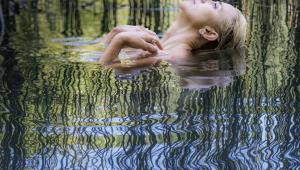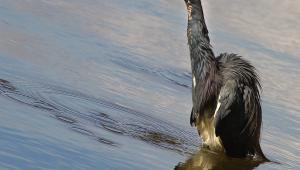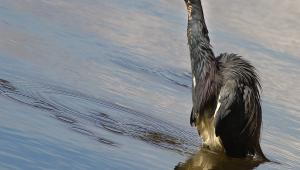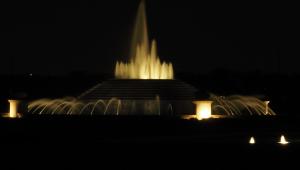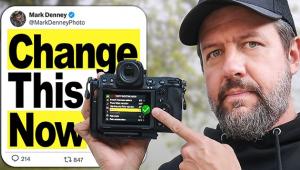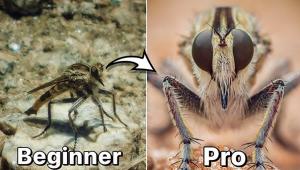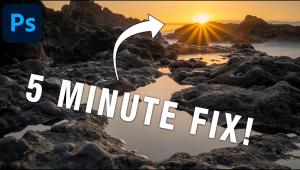Help
| PLEASE READ THIS
BEFORE WRITING TO HELP! Stereo Pair Slide
Mounting A. After checking a reference book I found your 1950s vintage Revere #33 is a two lens stereo camera. It appears that all types of two, three, or four lens stereo processing for either slides or prints is difficult to find these days and rather expensive when you can find it. I called Kodak's hot line (800-242-2424) and they said their processing labs scattered around the country no longer process and mount 35mm stereo pair slides but they suggested Rocky Mountain Film Lab, 560 Geneva St., Aurora, CO 80010; (303) 364-6444; e-mail: info@rockymountainfilm.com; web site: www.rockymountainfilm.com. I just accessed their web site and found they charge $36.50 for one roll processing and mounting (K-14 Kodachrome or E-6 chrome slide films) with a one to three months turnaround time. Also, they can mount previously processed stereo slide film at $1 per frame plus $4 shipping and handling. If they cannot assist you, try contacting the group that many stereo enthusiasts belong to and they should have the names of some labs: National Stereoscopic Association, PO Box 14801, Columbus, OH 43214. Kodak Pocket Junior
Price A. Most
of the early Kodaks illustrated (unfortunately in black and white) in
my Kodak Cameras, The First Hundred Years reference book have a very
different metal folding mechanism than shown on your camera. But, after
skimming further through the book I found the No. 1A Pocket Kodak Junior
(1929-32) (page 150) with similar folding struts that has a KODO shutter.
It was made with black, blue, green, or brown leather and took 116-size
film. Assuming this is your camera, I checked another current price
guide McKeown's Price Guide to Antique and Classic Cameras, 2001-2002
(page 358) and found this camera in black has a B&W In Point-And-Shoot? A. Sure you can use 35mm black and white film in your point-and-shoot camera. I assume you would be using recently purchased black and white film that has DX coding to set the film speed for your camera. You might want to consider buying chromogenic black and white film by Kodak or Ilford. Both of these ISO 400 films can be processed in standard C41 color negative film chemistry at any standard one-hour or overnight finishing lab, which is more convenient than finding a custom lab that specializes in processing and printing conventional black and white films. Of course, if you do your own film processing you probably would prefer conventional black and white film. Black and white film, like color negative film, has broad exposure latitude, so the camera's metering system does not have to be exceptionally accurate. Turn Off Pre-Flash? A. The camera's pre-flash is normally a focus assist light for the camera's autofocusing to provide adequate light in dimmer situations. The easiest way to disable the pre-flash would be to switch the lens from AF to Manual focus mode. This should stop the pre-flash so you don't trigger your studio flash slave and prematurely fire the studio flashes before the camera flash actually fires. At least this is the way I work with studio slave flash units with my Canon EOS A2 AF SLR. Canon QL 19 Battery A. Your Canonet QL 19 is identical to my old Canonet QL 17 except it has a f/1.9 lens. The instructions show it takes a 1.3v #625 mercury battery, or equivalent. But, few places sell mercury batteries these days. A reader just informed me about a source via the Internet at px625.com (90 Orchard St., Boston, MA 02130) where you can order these batteries. Your local RadioShack store is also a good source for older and hard to find batteries. If they don't stock the one you need, often they can order it. Or try Scherer Supplies (Box 250, Ewing, VA 24248; (423) 733-2615) they have a zinc-air with no mercury or cadmium. MX625 replaces PX625 and PX13; MX675 replaces PX675. In addition there are zinc-air batteries available from Wein (sold through The Tiffen Company dealers). One of them should be able to get your nice old Canonet working again. Of course, you can operate it without batteries if you want, but you would have to determine your exposure yourself (using a guide possibly) and then set both the lens aperture and shutter speed yourself. Since the camera is wound and rewound manually, the battery is only used for metering and automatically setting the aperture when set to "A." I still think this is one of the nicest compact cameras ever--and it sure has a fast lens when compared to today's fully automatic AF cameras! Darkroom Advice A. I know I have seen several books on starting a home darkroom in the past, but the only current one I've been able to locate is a Kodak booklet titled Building a Home Darkroom E 1439991 available for $24.94 through The Tiffen Company dealers. To locate a dealer in your area, contact The Tiffen Company Information at (800) 645-2522. Advice For A Beginner A.
I'll try to briefly answer your questions, but I would recommend
you check at a library for more detailed help in taking pictures by
low level or existing light conditions with or without using flash.
Fireworks are best recorded using bulb (when the shutter stays open
until you close it) with the camera placed on some type of support.
A tripod would be best, as it would allow you to move the lens to point
toward the sky where the fireworks are going off. But you could use
a parked car or some other firm, non-moving, support. Just point the
lens toward where the fireworks have been going off, have the camera
focused for infinity, set the moderate telephoto lens at about f/8 with
ISO 100 speed film, and leave the shutter open for two or three bursts
of fireworks. Needless to say, this would be difficult to do with a
compact fully automatic camera, but if you have a SLR or other camera
with manual settings you should be able to get some nice records. Package Prints A. You don't say what type of packages you plan to offer. Are they sports, church directory, senior portraits, or something similar? Have you checked the Photo Lab Showcase in a recent issue of Shutterbug? Dozens of labs advertise there and many offer various types of package printing as do many larger professional-oriented local and mail-order labs. I suggest you review a recent issue and call or write several of the labs, tell them the type of packages you seek, then ask for a current price list if they do the type of package printing you seek. Freedom Self-Timer A. Sorry, I don't have that particular camera instruction book among the hundreds of cameras I have reviewed in the past several years. As you surmised, most cameras have a built-in self-timer function. Usually you just touch a button to access that mode, then press the shutter release down to activate it. Most take 10-15 seconds before the camera will take a picture. Many have a blinking or flashing light on the front that begins flashing more rapidly a few seconds before the shutter trips. Why not try this when the camera is empty (no film loaded) and just look at the front of the camera after you press the shutter? Yes, this is trial and error, but it should answer your question, and you won't waste any film either. Manual For Weathermatic A. There are several reliable sources for instruction books for older cameras. These include: John S. Craig, Box 1637, Torrington, CT 06790; (860) 496-9791; www.craigcamera.com/ib_a.htm. Another site for camera manuals is www.manualsrus.com. Finally, you could check with Finger Lakes Photo Books, PO Box 1002, Elbridge, NY 13060; (315) 491-1188; web site: www.photobooksonline.com; e-mail: flpbks@localnet.com. Hopefully, one or more of these places will have the instructions for your Minolta Weathermatic. |


